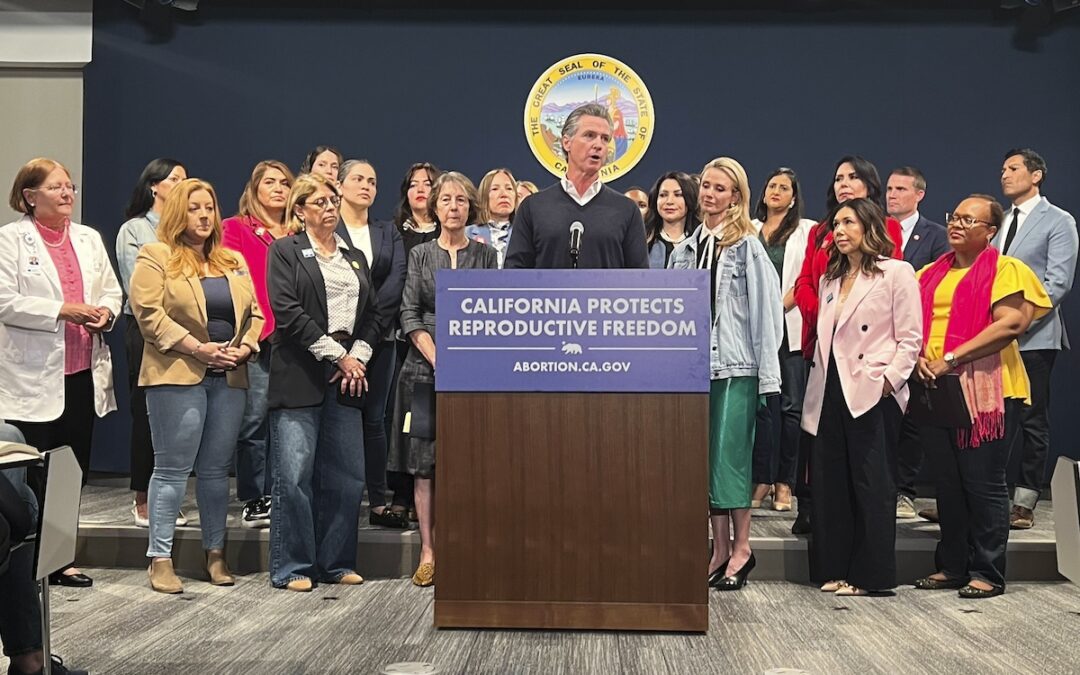
Buckeye Valley Fire District firetruck (Photo from Buckeye Valley Fire District's website)
Since the first fire district was formed in Arizona in 1918, firefighters have proudly provided service to the citizens in, around, and passing through the rural areas of our state—those areas not covered by cities or towns.
Today, there are more than 144 districts that provide fire and emergency medical services to Arizonans and all visitors traveling through our beautiful state.
RELATED: Opinion: Kari Lake’s Economic Plan Would Be a Disaster for Arizona
As fire chief of the Arizona Fire & Medical Authority and the Buckeye Valley Fire District, I would like to lay out the facts of Proposition 310—The Arizona Fire District Safety Act. Put forward by Arizona firefighters and a bipartisan group of state legislators, this temporary one-tenth of a cent sales tax will generate approximately $150 million dollars annually for the state’s fire districts.
Rural Areas Hurting For Resources
These districts are in crisis. Located mostly in rural Arizona and along the major roadways connecting Phoenix, Tucson, Kingman, Flagstaff, and Yuma, fire districts are routinely strapped for funding and short of firefighters, paramedics, equipment, and training.
While urban fire departments frequently respond to 911 emergency calls in six or seven minutes, fire districts’ response times routinely can exceed 30 minutes. Not only does this create a serious risk for the 1.5 million Arizonans who live in fire districts, but it also impacts the residents and visitors who travel our state’s interstates and roadways on day trips, sightseeing tours, and vacations.
Recession-Era Funding Cuts Still in Effect
Fire districts like Buckeye Valley are not funded by and do not receive the same revenues that cities or towns do and rely on a capped tax rate. Our tax rate was cut in half during the Great Recession and has remained at this level ever since.
And unlike other municipalities, fire districts do not receive funding from Highway User Funds (HURF), Transaction Privilege Tax/Sales Tax (state or local), Vehicle License Taxes (VLT), or income tax. Because of this, fire and EMS response times are longer than reasonable and outside of industry standards, and it is nearly impossible to keep up with population growth demands.
RELATED: Everything You Need to Know to Vote in Arizona This November
Due to these limitations, communities are seeing drastic decreases in firefighter staffing. In Sun City, firefighter staffing has been cut 19%; in Bullhead City, a 23% decrease; and at North Phoenix’s Daisy Mountain District, staffing is down 15%.
Buckeye Valley, like other fire districts, has been forced to close one fire station, remove an ambulance from service, and delay the acquisition of critically needed equipment until sustainable funding can be found. This is a service area that most of us routinely drive through to get to California or Rocky Point and is roughly half the size of the state of Connecticut. These service cuts have resulted in emergency response times in excess of 30 minutes in many cases.
Pennies From You, Millions for Firefighters
Prop 310 provides a mechanism to fairly fund fire districts and to ensure that districts get the financial help they need. To put the financial side of the equation into perspective, this fraction of a penny will cost you one cent the next time you spend $10 or a dime if you spend $100.
RELATED: ‘Our Future Also Counts’: An 18-Year-Old Phoenix Teen on Why She’s Voting in the Midterm Elections
That fraction of a penny will help provide for improved response times the next time you are driving to Las Vegas or the Grand Canyon and when lives are in danger. It will also:
- Train additional firefighter paramedics that were lost due to budget cuts
- Construct and staff new fire stations for better response times
- Staff and equip additional regionally deployed ambulances
- Expand regionally deployed Urban Wildland firefighters for at-risk communities threatened by wildfires
- Provide increased special operations capabilities (Hazardous Materials Response & Technical Rescue) for mountain rescues, swift water rescues, and off-road accidents
- Expand telemedicine services for better patient care for patients with long transport times to hospitals
- Staff and equip regionally deployed Crisis Response Units for urgent behavioral health issues
- Expand occupational cancer screenings for firefighters
- Acquire critically needed fire equipment
In this time of crisis, each Arizona voter has the opportunity to act as our first responders do when they face an emergency. Together, we can move toward the crisis and solve it, doing everything in our power to help those in need.
Looking for the latest Arizona news? Sign up for our FREE daily newsletter.
Politics

Democrats successfully force vote on repealing 1864 abortion ban, passes House
The Arizona legislature moved forward two bills Wednesday that would repeal the state’s 1864 abortion ban. A bill to repeal the ban has been...

State Official: 1864 abortion ban gives Arizona ‘black eye’
Arizona’s role at the forefront of the climate crisis, defending democratic elections, and protecting reproductive rights has caught the attention...
Local News

Arizona Sens. Anthony Kern, Jake Hoffman, indicted for fake election scheme
Eighteen individuals involved in a conspiracy to overturn Arizona’s election results in 2020 were indicted by a grand jury Wednesday and charged...

Gov. Gavin Newsom wants to let Arizona doctors provide abortions in California
California law generally allows abortion up to the point of fetal viability, which is around 24 weeks. SACRAMENTO, Calif. (AP) — Arizona doctors...




